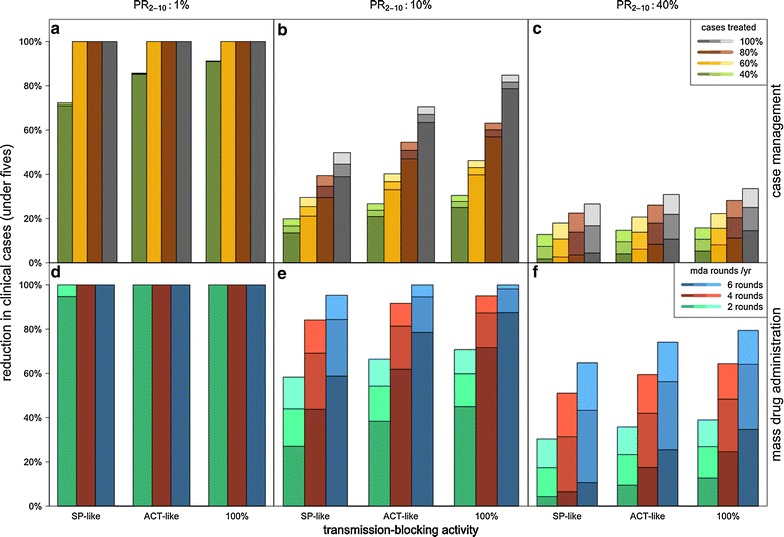Fig. 4.

Combined effects of transmission-blocking and post-treatment protection on reductions in clinical malaria. Relative reduction in clinical incidence among children under 5 years due to case management (a–c) or MDA (d–f) with simulated drugs showing each combination of length of post-treatment protection (stacked bars, with the lowest bars and darkest colours indicating 3 days of protection, the middle bar showing 30 days of protection and the highest bars and lightest colours showing 60 days of protection) with different levels of transmission-blocking activity (x axis: activity comparable with sulfadoxine–pyrimethamine (SP), artemisinin combination therapies (ACT), or a 100% transmission blocker (comparable with ACT + primaquine). Low, medium, and high endemicity levels pre-intervention (columns) are indicated by slide prevalence among 2–10 year old children (PR2–10). Case management (a–c): coverage levels (40, 60, 80, 100%) indicate the proportion of malarial fever cases treated, and impact shown is in the absence of MDA. MDA (d–f): the transmission reductions are the result of long-term, sustained MDA to a randomly chosen 80% of the population 2, 4, or 6 times a year, in the absence of any case management
